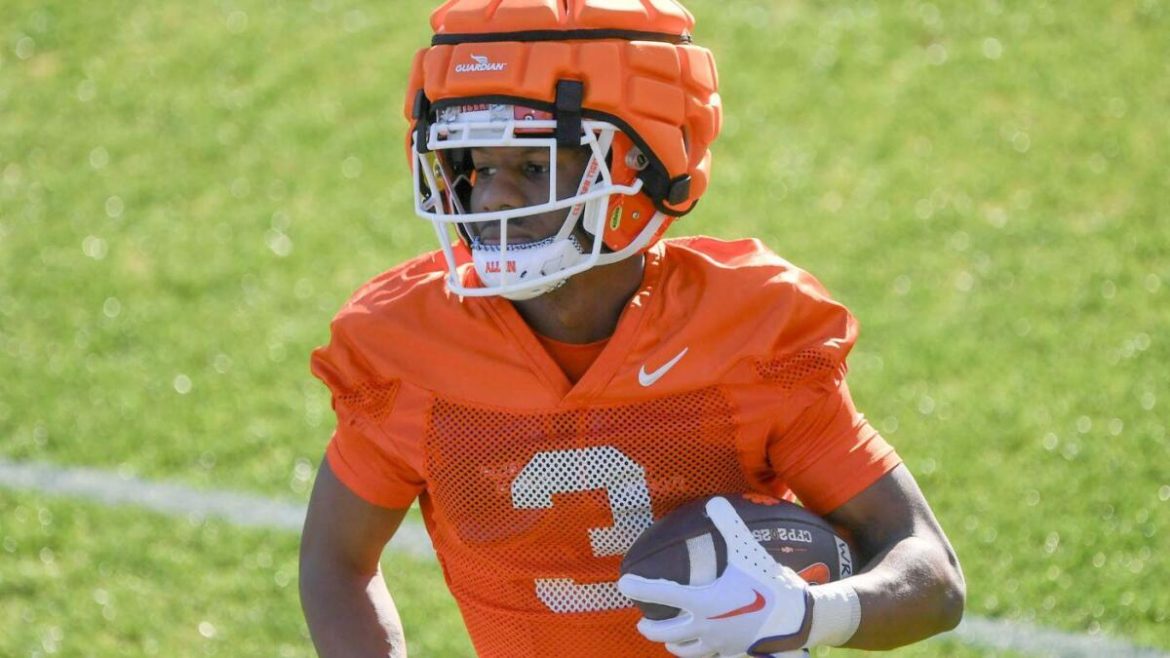The Unexpected Departure of Marquise Henderson: A Case Study in College Football Recruiting
The recent dismissal of Marquise Henderson, a highly-touted four-star recruit, from the Clemson University football program has sent ripples through the college football landscape. This event, occurring shortly after Henderson enrolled as a mid-year freshman, underscores the precarious nature of recruiting and the often-unforeseen factors that can derail a promising athletic career. While the reasons for his dismissal remain undisclosed, the situation provides a compelling case study in the complexities of managing expectations, navigating player conduct, and the inherent risks associated with investing in young talent.
A Promising Prospect Silenced
Marquise Henderson arrived at Clemson with significant fanfare. Hailing from Belton-Honea Path High School in South Carolina, he was ranked among the top prospects in the 2025 class, lauded for his all-purpose abilities and explosive potential. He committed to Clemson relatively quickly after receiving an offer, signaling a strong desire to represent his home-state university. His recruitment represented a shift in Clemson’s strategy, embracing in-state talent more readily than in previous years. He was considered an “explosive” player, poised to make an immediate impact.
However, his early enrollment was hampered by a hamstring injury, sidelining him for much of spring practice. This injury, while unfortunate, didn’t appear to foreshadow the abrupt end to his Clemson career. The dismissal, announced on June 19th, came as a surprise, with the program offering only a brief statement wishing him well. The lack of transparency surrounding the decision has fueled speculation, but the core fact remains: a player once considered a cornerstone of Clemson’s future is no longer with the team.
The Fragility of Recruiting Momentum
Henderson’s dismissal highlights the inherent volatility of college football recruiting. Programs invest considerable resources – time, personnel, and scholarship offers – in identifying and securing commitments from promising athletes. However, a commitment is not a guarantee. Players can decommit, transfer, or, as in Henderson’s case, be dismissed from the program for reasons ranging from academic ineligibility to violations of team rules.
The situation also illustrates the pressure cooker environment of high-level college athletics. Young athletes are thrust into a world of intense scrutiny, demanding schedules, and heightened expectations. The transition from high school to college can be challenging, and even seemingly minor missteps can have significant consequences. The dismissal serves as a stark reminder that athletic talent alone is not sufficient for success; character, discipline, and adherence to team standards are equally crucial.
Undisclosed Reasons and the Culture of Silence
The absence of a publicly stated reason for Henderson’s dismissal is noteworthy. While Clemson is not obligated to disclose private matters, the lack of transparency raises questions about the nature of the infraction. This practice is not uncommon in college athletics, where programs often prioritize protecting their reputation and avoiding negative publicity.
The silence surrounding the dismissal also speaks to a broader trend in college sports – a reluctance to publicly address disciplinary issues involving athletes. This can create a perception of a double standard, where athletes are held to a different set of rules than other students. While protecting player privacy is important, a greater degree of transparency could foster accountability and build trust with the public.
The Impact on Clemson’s Program
The loss of Henderson is a setback for Clemson’s recruiting efforts, particularly within the state of South Carolina. He represented a significant win for Dabo Swinney’s program, and his dismissal could deter other in-state prospects from committing to the Tigers.
Beyond the immediate recruiting implications, Henderson’s departure also creates a void in Clemson’s running back room. While the team has other talented players at the position, Henderson’s potential as an all-purpose threat will be missed. The coaching staff will now need to reassess their depth chart and adjust their offensive strategy accordingly.
Beyond Football: Parallels to Broader Trends
The Marquise Henderson case, while specific to college football, resonates with broader societal trends. The emphasis on early identification of talent, the pressure to succeed at a young age, and the potential for rapid downfall are all themes that extend beyond the realm of athletics.
The incident also touches upon issues of hazing, though no direct connection has been established. Reports on hazing incidents highlight the dangers of unchecked power dynamics and the potential for physical and emotional harm. While not directly implicated in Henderson’s dismissal, the broader context of collegiate culture warrants attention.
A Cautionary Tale
The dismissal of Marquise Henderson serves as a cautionary tale for both athletes and programs. For athletes, it underscores the importance of making responsible choices, prioritizing academics, and understanding the expectations of their coaches and institutions. For programs, it highlights the need for robust character evaluation processes, comprehensive support systems for student-athletes, and a commitment to transparency and accountability.
Ultimately, the story of Marquise Henderson is a reminder that the path to success is rarely linear. While his time at Clemson may have been cut short, his future remains unwritten. The hope is that he can learn from this experience and find a path forward, both on and off the field. The incident leaves a lingering question: what unseen factors contributed to this abrupt end, and what lessons can be learned to prevent similar situations in the future?





